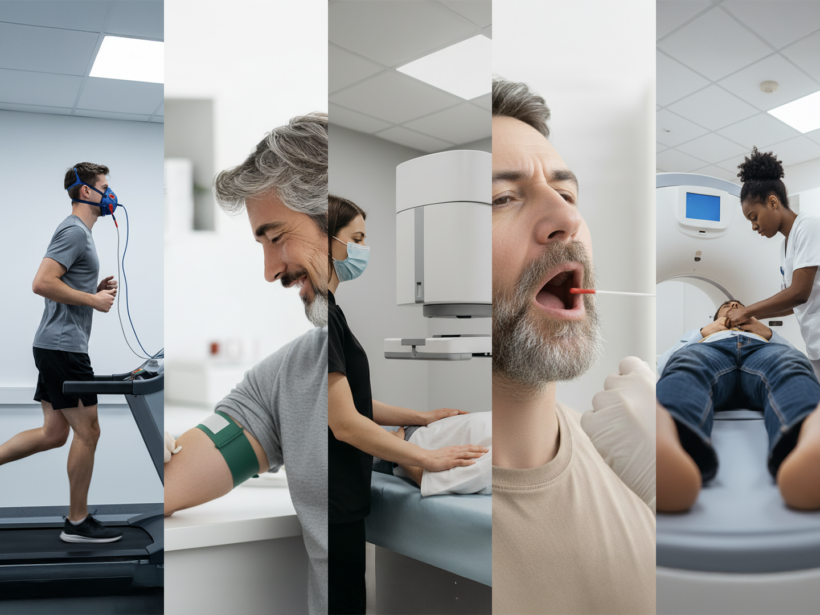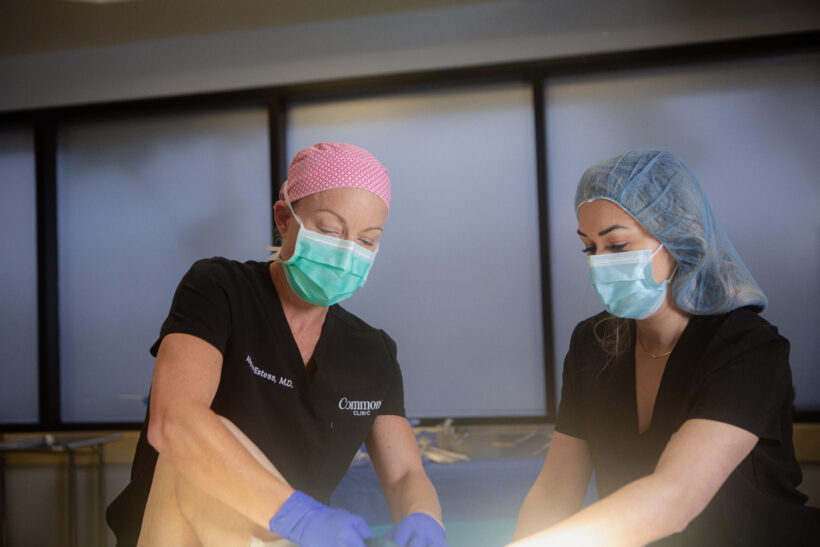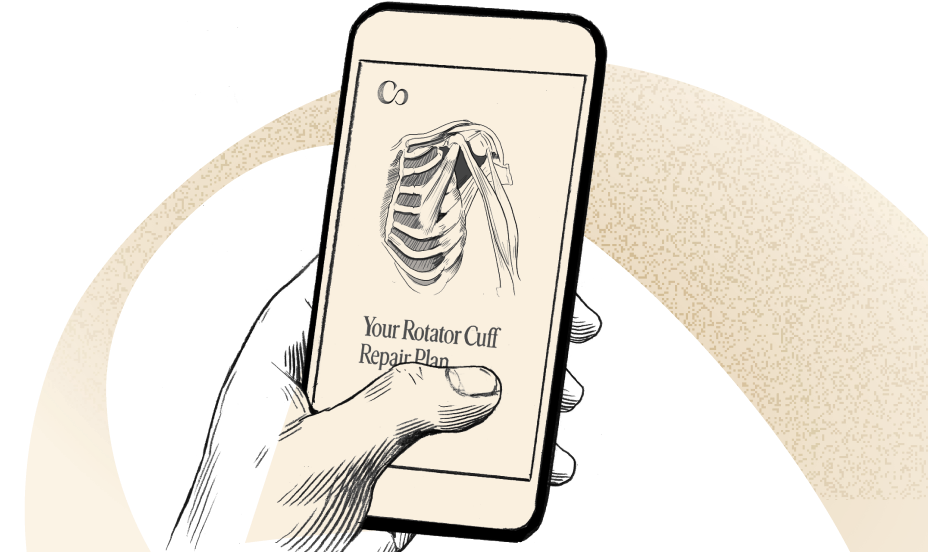From Sideline to Success: Alfred’s Comeback After a Knee Fracture

How a Knee Fracture Almost Stopped Alfred—and How He Got Moving Again
Alfred (Al) is not your average guy. He’s a professor, punk rock singer, gym owner, and endurance enthusiast training for a cross-country run. But his active lifestyle came to a screeching halt when he suffered a knee fracture—an injury that threatened to derail everything he cared about.
Determined to get back to life as he knew it, Alfred chose to have surgery to repair his damaged knee. But when his recovery plateaued, he realized he needed a more advanced approach—one rooted in expert physical therapy, innovative treatments like PRP injections, and an orthopedic team that truly understood his goals.
That’s when he found Commons Clinic.
His Diagnosis: Understanding Osteochondral Fracture
Alfred is no stranger to pushing his body’s limits; in fact, he owns a gym that encourages people to do just that, every day. As a lifelong athlete, he had a few minor injuries over the years and had even done physical therapy in the past, but this time was different.
A knee fracture can be a serious injury, especially when it involves the cartilage and underlying bone, called an osteochondral fracture. In Al’s case, the cartilage was severely damaged, and the fracture extended into the top of his tibia (the lower leg bone).
What is an Osteochondral Fracture?
An osteochondral fracture occurs when both the cartilage (chondral) and underlying bone (osteo) in a joint are damaged. This type of injury can occur in any joint in the body, but is common in the knee, ankle, elbow, and wrist.
Common Causes of This Type of Knee Fracture
Osteochondral injuries are most often the result of high-impact trauma to the joint (falls, accidents, sports injuries) and should be treated right away. However, often misdiagnosed early on, many patients present with pain related to a previously missed osteochondral injury.
What is the treatment for an osteochondral injury?
Treatment varies depending on the location and degree of the damage. Treatment options can range from conservative management and physical therapy to minimally invasive arthroscopic surgery to open surgery.
Surgical techniques include:
– Chondroplasty – debridement or “clean-up” of the affected cartilage tissue
– Fixation – Repair of a larger bone fragment, particularly in a weight-bearing zone
– Microfracture – drilling small holes in the affected bone to stimulate healing and cartilage growth
– Cartilage graft – replacing the damaged tissue with donor or harvested cartilage
– Bone graft – replacing a damaged part of the bone with a graft
– Joint resurfacing – covering the joint surfaces with metal or plastic implants to address the damaged joint surface
Why Osteochondral Injuries Matter:
Without proper treatment, osteochondral injuries can lead to:
– Chronic pain
– Loss of joint function
– Early-onset arthritis
That’s why timely diagnosis and a comprehensive recovery plan—including physical therapy and, in some cases, PRP injections—are crucial.
Check out our Knee Fracture 101 article for more information on other types of knee fractures.
After being diagnosed, Alfred underwent arthroscopic microfracture surgery, a minimally invasive technique that involves drilling tiny holes into the damaged bone to stimulate a healing response and promote new cartilage growth.
But surgery was just the beginning. After his procedure, Al tried traditional physical therapy, but his results fell short, and he knew he needed more.
His Plan: Physical Therapy and PRP Treatment at Commons Clinic
It wasn’t until he started personalized physical therapy at Commons Clinic that things began to shift. Under the guidance of Brett Pugh, PT, DPT, Commons Clinic’s founding physical therapist, Alfred followed a tailored program designed to restore mobility, build strength, and promote healing.
Physical Therapy for Knee Fractures
Effective physical therapy after a knee fracture:
- Reduces stiffness and swelling
- Restores strength and range of motion
- Improves functional mobility
- Speeds up recovery
- Prevents long-term complications
About Brett Pugh, PT, DPT: Expert Physical Therapist
As a doctor of physical therapy, Brett Pugh specializes in working with diverse populations, from elite athletes to weekend warriors and everyday individuals.
As the founding physical therapist of the Commons Clinic rehabilitation department, he is committed to innovation and leadership in the field, striving to offer patients a reimagined physical therapy experience. Brett takes a holistic, patient-centered approach, delivering personalized, evidence-based care to help patients achieve lasting results.
Boosting Recovery With PRP Injections
In addition to physical therapy, Alfred saw Dr. Eric Millstein, an orthopedic and sports medicine specialist, for a second opinion. Dr. Millstein recommended PRP injections to further support and accelerate healing.
What are PRP Injections?
A PRP injection is an increasingly popular treatment that uses the patient’s own blood to promote healing. The technique involves injecting PRP or “platelet-rich plasma” into the affected area to accelerate healing, and is often used for musculoskeletal injuries, post-surgical healing, cosmetic procedures, hair loss treatment, and more.
How do PRP Injections Work?
Platelet-rich plasma can be obtained by taking a blood sample from the patient and spinning it in a centrifuge, separating out the other components of the blood to create a concentrated, platelet-rich plasma.
This PRP substance is then injected into the injured area. While its mechanism is not fully understood, it is thought that by increasing the concentration of growth factors and bioproteins in the area, the PRP substance facilitates the healing process, thereby reducing pain, improving function, and accelerating recovery.
How PRP Injections Help:
– Stimulate tissue regeneration
– Reduce inflammation and pain
– Accelerate healing of cartilage and bone
– Complement surgery and physical therapy
His Result: From Injury to Inspiration
Al’s journey to recovery was not without bumps in the road, but when he finally found the Commons Clinic team, everything changed. For him, the combination of PRP injection therapy and guided rehabilitation proved to be a game-changer.
With the support of Commons Clinic’s expert team, intensive physical therapy, and regenerative treatments like PRP injections, Alfred went from barely walking to running over 10 miles, pain-free.
Today, his dream of running across the country is no longer just a possibility—it’s a plan in motion.
Why Choose Commons Clinic for Knee Fracture Recovery?
For Alfred, trust was key. He knew his active lifestyle and lofty goals were dependent on a successful recovery, and his early results fell far short of his expectations. But once he found a team he could trust at Commons Clinic, his recovery was back on track.
Alfred trusted Commons Clinic with his most ambitious goals because of their:
- Personalized approach to care
- Expertise in orthopedic surgery and rehabilitation
- Integration of modern treatments like PRP injections
- Transparent, patient-first philosophy
This is a group of people that, yes, this is their profession, this is their job, but the patient is coming first.
Your Comeback Journey Awaits.
At Commons Clinic, we specialize in helping people recover from complex injuries like knee fractures using cutting-edge treatments, advanced physical therapy, and regenerative techniques like PRP injection therapy.
Whether your goal is to walk without pain, return to sport, or run across the country like Al, we’ll be with you every step of the way.






 (310) 574-0367
(310) 574-0367